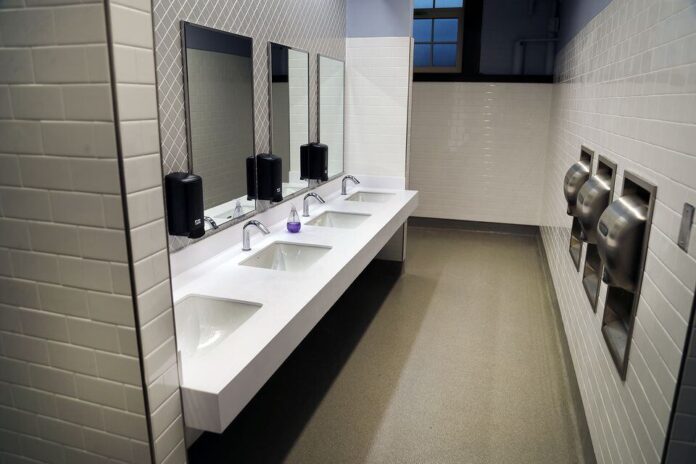We can all agree that the importance of hygiene is an undeniable and non-negotiable aspect of our daily lives. It is more than mere cleanliness; it is a fundamental component of well-being and societal health. One often overlooked yet vital aspect is the maintenance of commercial soap dispensers.
So, in the journey to foster a germ-free and pleasant restroom experience for all, this guide aims to unravel the secrets that lie within the maintenance of these humble yet crucial hygiene fixtures.
1. The Importance of Regular Maintenance:
In the dynamic world of business, maintaining a pristine and sanitary environment is paramount.
Commercial soap dispensers play a pivotal role in promoting hygiene within shared spaces, making regular maintenance a non-negotiable task.
Beyond ensuring a pleasant restroom experience, routine upkeep prevents potential malfunctions, prolonging the lifespan of these essential hygiene fixtures. A proactive approach to maintenance not only safeguards the health of employees and customers but also reflects positively on your business’s commitment to cleanliness.
2. Understanding Your Dispenser:
They can come in various types, each with its unique design and functionality. From manual push dispensers to touchless automatic models, understanding the specific features of your dispenser is crucial for effective maintenance.
Different dispensers may require distinct cleaning methods and compatible soaps. Take the time to familiarize yourself with the intricacies of your dispenser to tailor your maintenance routine for optimal results.
3. Step-by-Step Cleaning Procedures:
The maintenance of commercial soap dispensers involves more than a quick wipe-down. A thorough cleaning routine is essential to remove accumulated grime and bacteria.
Begin by emptying the dispenser and disassembling relevant components.
Use a mild, antibacterial soap or a vinegar solution to clean both the exterior and interior surfaces.
Pay special attention to nooks and crannies where residue may accumulate. Ensure that all parts are completely dry before reassembling the dispenser. Regular and meticulous cleaning not only enhances the dispenser’s performance but also contributes to a healthier and more hygienic environment.
4. Troubleshooting Common Issues:
Despite regular maintenance, soap dispensers may encounter common issues such as clogs, leaks, or malfunctioning sensors.
To address these challenges effectively, it’s crucial to diagnose the root cause. For clogs, inspect the dispenser nozzle and tubes, clearing any obstructions. Leaks may indicate worn-out seals, necessitating replacement.
Malfunctioning sensors might require recalibration or battery replacement in touchless dispensers. Providing a step-by-step troubleshooting guide empowers users to address issues promptly, ensuring uninterrupted access to soap and a smoothly functioning dispenser.
5. Choosing the Right Soap:
Selecting the appropriate soap for your commercial dispenser is a decision that goes beyond fragrance preferences. Consider factors such as soap formulation, compatibility with dispenser materials, and the specific hygiene needs of your environment.
Opt for high-quality, antimicrobial soaps that effectively combat germs without compromising the dispenser’s integrity. Regularly review and update your soap choices to align with evolving hygiene standards and the preferences of your clientele. Choosing the right soap not only enhances the user experience but also contributes to the overall effectiveness and longevity of your commercial soap dispensers.
6. Regular Inspection Routine:
Establishing a systematic inspection routine is a proactive measure to identify potential issues before they escalate. Regularly check dispenser components, including nozzles, sensors, and refill levels. Inspect for signs of wear, corrosion, or damage, addressing any issues promptly.
A consistent inspection routine minimizes the risk of unexpected malfunctions and allows for timely maintenance, preserving the functionality of the dispenser. Incorporate this routine into your overall facility maintenance schedule to ensure a seamless and trouble-free experience for users.
7. Educating Staff:
Maintaining soap dispensers is a collective responsibility that extends beyond the maintenance team.
Educate staff members on the importance of proper dispenser care and the role it plays in upholding a hygienic workplace.
Provide training on cleaning procedures, troubleshooting common issues, and the significance of using compatible soaps.
Foster a sense of ownership among employees, making them active participants in maintaining a clean and sanitary environment. Create staff awareness, and engagement and be open to change and new ideas. This is a step-by-step process for making a successful dispenser maintenance strategy.
8. Eco-Friendly Practices:
In an era of heightened environmental consciousness, incorporating eco-friendly practices into dispenser maintenance aligns with broader sustainability goals. Consider opting for biodegradable or environmentally friendly soaps that minimize ecological impact.
Explore refillable soap options to reduce packaging waste. Implementing energy-efficient and low-waste practices in dispenser maintenance not only contributes to a greener footprint but also resonates positively with environmentally conscious customers and stakeholders.
Conclusion:
The meticulous care and maintenance of commercial soap dispensers transcend the routine tasks associated with cleanliness. It constitutes a multifaceted approach that intertwines optimal performance, hygiene, and sustainability.
By embracing a proactive stance towards dispenser upkeep, businesses not only foster a germ-free and pleasant restroom experience but also contribute to the overall well-being of employees and customers.




